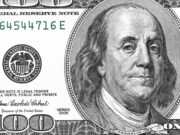At its March meeting, Federal Reserve officials addressed how they aim to shrink their trillions in bond holdings, with a consensus of approximately $95 billion each month, according to minutes released Wednesday.
Officials “generally agreed” to allow a maximum of $60 billion in Treasury bonds and $35 billion in mortgage-backed securities to roll off over three months, most likely beginning in May. That amount would be almost double the rate of the last attempt, which ran from 2017 to 2019, and would mark the beginning of a historic shift away from ultra-easy monetary policy. Aside from the balance sheet, policymakers debated the speed of future interest rate rises, with some members favoring more aggressive measures.
What more was said, and what should we keep in mind?
The Fed authorized the first interest rate hike in more than three years during its meeting on March 15-16. The quarter-point increase increased the benchmark short-term loan rate from near zero, where it had stood since March 2020, to 25 basis points.
On the other hand, the minutes suggested that future meetings may see rate rises of 50 basis points, which is in line with market expectations for the May vote. Indeed, there was a strong desire to push higher last month. Some authorities were hesitant to make a 50 basis point adjustment in March because of the ongoing conflict in Ukraine.
According to the minutes, “Many participants noted that one or more 50 basis point increases in the target range could be appropriate at future meetings, particularly if inflation pressures remained elevated or intensified.” Following the Fed’s announcement, stocks plummeted while government bond rates rose. The market, however, recovered from its lows as traders reacted to the central bank’s new stance.
Quincy Krosby, a chief equity strategist at LPL Financial, said that the minutes were “a warning to anyone who thinks that the Fed is going to be more dovish in their fight against inflation.” Indeed, officials have become increasingly adamant about reducing inflation in recent days. Governor Lael Brainard said on Tuesday that lowering prices will need a combination of gradual increases and vigorous balance sheet reduction. According to the markets, the Fed is expected to raise rates by a total of 250 basis points this year. “All participants indicated their strong commitment and determination to take the measures necessary to restore price stability,” according to the minutes.
The central bank’s hawkishness extended to the discussion of the balance sheet. Some members desired no limitations on the quantity of monthly runoff, whereas others believed “relatively high” limits were acceptable. The Fed will allow a set amount of revenues from aging securities to roll off each month as part of the balance sheet drawdown while reinvesting the remainder. Shorter-term Treasury notes will be targeted since they are “highly valued as safe and liquid assets by the private sector.”
While no formal votes were taken, the minutes showed that members agreed that the process could begin in May. However, it remains to be seen if the runoff would truly reach $95 billion. MBS (Mortgage-backed securities) demand is now modest since refinancing activity is minimal, and 30-year mortgage rates have risen beyond 5%. Officials admitted that passive mortgage runoff may not be enough and that outright sales should be explored “after balance sheet runoff was well underway.”
Officials from the Federal Reserve also boosted their inflation forecasts while lowering their economic growth forecasts during the conference. The central bank’s tightening is clearly being driven by rising inflation. Markets were waiting for the minutes to see what direction monetary policy would take next. At his post-meeting press conference, Fed Chairman Jerome Powell stated that the minutes would include insights into the Fed’s thinking on balance sheet reduction.
During monthly asset purchases in the aftermath of the pandemic crisis, the Fed increased its holdings to about $9 trillion, a more than twofold increase. Despite indications of raging inflation higher than anything witnessed in the United States since the early 1980s, such purchases came to a halt barely a month ago.














